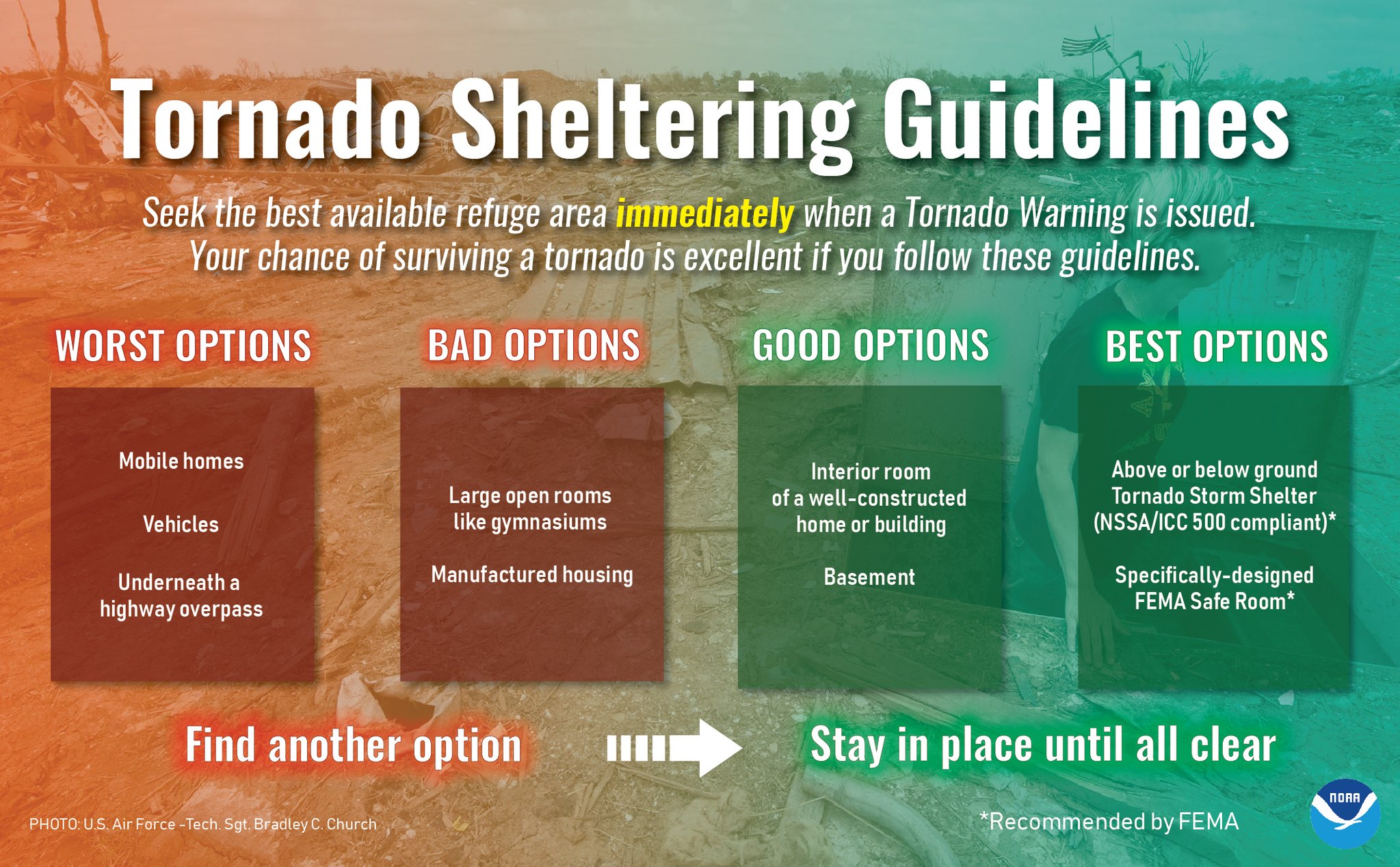Flood Warning In Effect: Essential Safety Advice From The NWS

Table of Contents
Understanding Flood Warnings and Advisories
The NWS uses different terms to communicate the severity and urgency of potential flooding:
- Flood Warning: This is the most serious alert. Flooding is occurring or is imminent. Immediate action is required.
- Flood Advisory: This indicates that flooding is possible. While not as urgent as a warning, it still requires attention and preparedness.
- Flood Watch: This means conditions are favorable for flooding to develop. Stay informed and be prepared to take action if a warning is issued.
A flood warning typically includes:
- Location: The specific area(s) affected by the flooding.
- Timing: When the flooding is expected to begin and how long it may last.
- Severity: The potential extent and impact of the flooding (e.g., minor, moderate, major).
How to receive flood warnings:
- NOAA Weather Radio: A dedicated weather radio provides continuous updates, even during power outages.
- Smartphone Apps: Numerous weather apps (like the NWS app) send alerts directly to your phone.
- Local News: Television and radio broadcasts provide regular weather updates and emergency alerts.
Knowing the meaning of different warning levels and how to access warnings is crucial to your flood preparedness.
Protecting Yourself and Your Family During a Flood
When a Flood Warning is issued, immediate action is vital. Your safety and the safety of your family are paramount.
- Evacuate immediately if instructed by authorities: Do not hesitate; evacuation orders are designed to save lives.
- Move valuable items to higher ground: This includes furniture, electronics, and important documents.
- Unplug electrical appliances: Prevent electrocution hazards.
- Gather emergency supplies: Prepare a kit including water, non-perishable food, a first-aid kit, medications, flashlights, and blankets.
- Know your evacuation routes: Familiarize yourself with multiple escape routes in case one is blocked.
- Secure your home as best as possible: Board up windows, move valuable items to upper floors, and take steps to prevent further water damage.
Safe Driving Practices During Flooding
Driving through floodwaters is incredibly dangerous and should be avoided at all costs. Remember the mantra: Turn around, don't drown.
- Never drive through flooded areas: Even if the water seems shallow, it can hide deep potholes, debris, or washed-out roads. The force of the water can easily sweep a vehicle away.
- Hidden hazards: Floodwaters often conceal significant dangers like downed power lines, road washouts, and debris.
- If your car stalls in floodwater: Get out immediately and move to higher ground. Do not attempt to restart the vehicle.
- Heavy rain and flash floods: Driving during heavy rain significantly increases your risk of encountering flash floods, so avoid driving unless absolutely necessary.
Post-Flood Safety and Recovery
Once the floodwaters recede, the dangers aren't over. Post-flood safety is essential.
- Avoid floodwaters: Floodwaters may be contaminated with sewage, chemicals, and other harmful substances.
- Inspect your home for damage before entering: Look for structural damage, gas leaks, and electrical hazards.
- Report damage to your insurance company and local authorities: This is crucial for receiving assistance and aid.
- Be aware of potential health hazards: Floodwaters can breed bacteria and mold, posing significant health risks.
- Seek assistance from relief organizations: Many organizations provide aid and support to flood victims.
Conclusion
Staying safe during a Flood Warning requires preparedness and quick action. The information provided by the NWS is crucial; heeding a flood warning can be life-saving. Develop a comprehensive flood safety plan, sign up for NWS alerts, and stay informed about severe weather. Don't wait until it's too late – prioritize your flood preparedness today! Learn more about flood safety and ensure your family is prepared for the unexpected. Create a family emergency plan and practice it regularly. Your proactive approach to flood preparedness may save lives.

Featured Posts
-
 Maccabi Tel Aviv Strong Contender For The Israeli Football Championship
May 26, 2025
Maccabi Tel Aviv Strong Contender For The Israeli Football Championship
May 26, 2025 -
 New Orleans Jailbreak Inmates Allegedly Use Hair Trimmers In Escape Bid
May 26, 2025
New Orleans Jailbreak Inmates Allegedly Use Hair Trimmers In Escape Bid
May 26, 2025 -
 The Roots Of Trumps Criticism Of European Trade Practices
May 26, 2025
The Roots Of Trumps Criticism Of European Trade Practices
May 26, 2025 -
 Whats On Tonight Top 10 Tv And Streaming Picks For Monday
May 26, 2025
Whats On Tonight Top 10 Tv And Streaming Picks For Monday
May 26, 2025 -
 La Primera Comunion De Los Gemelos Del Principe Alberto
May 26, 2025
La Primera Comunion De Los Gemelos Del Principe Alberto
May 26, 2025
Latest Posts
-
 Update Pacers Remove Suspension Against Tyrese Haliburtons Father
May 28, 2025
Update Pacers Remove Suspension Against Tyrese Haliburtons Father
May 28, 2025 -
 Jalen Brunson Reacts To Wwe Style Prediction Involving Tyrese Haliburton Knicks News Update
May 28, 2025
Jalen Brunson Reacts To Wwe Style Prediction Involving Tyrese Haliburton Knicks News Update
May 28, 2025 -
 Indiana Pacers Announce End Of Tyrese Haliburtons Fathers Suspension
May 28, 2025
Indiana Pacers Announce End Of Tyrese Haliburtons Fathers Suspension
May 28, 2025 -
 Knicks Star Jalen Brunson Addresses Tyrese Haliburton Rivalry Prediction
May 28, 2025
Knicks Star Jalen Brunson Addresses Tyrese Haliburton Rivalry Prediction
May 28, 2025 -
 Nba News Jalen Brunson On The Tyrese Haliburton Wwe Script
May 28, 2025
Nba News Jalen Brunson On The Tyrese Haliburton Wwe Script
May 28, 2025
